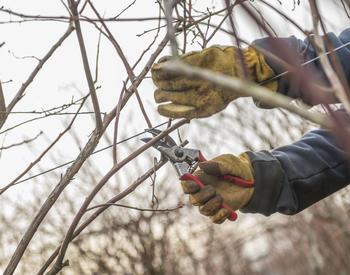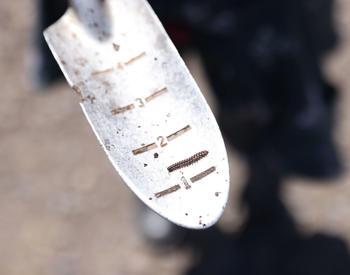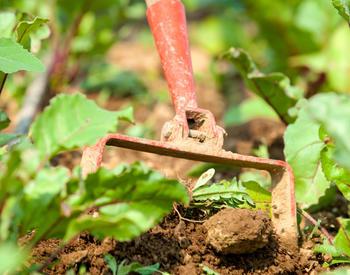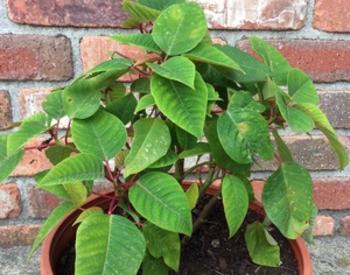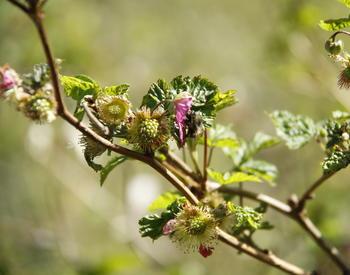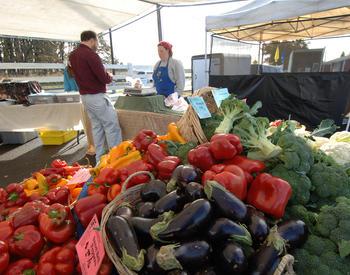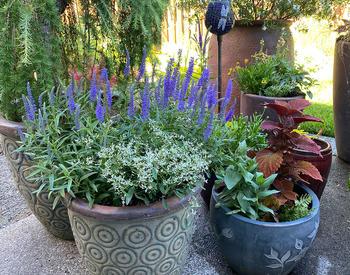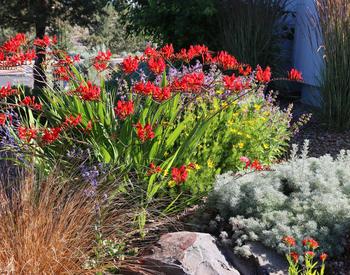Transcript
Okay, in this segment, we're going to be doing some work on this thundercloud plum. It's right in the main entryway of the arboretum, and so we could use a little work here to make sure that our pathway is clear. We're also going to be removing a large dead limb.
Tom, how are you deciding what material needs to go?
Okay, well, first of all, right here, we need to elevate this because it's too low over the pathway. So, these are...this probably should have been done a while ago. We're going to start with that. We're going to elevate, we're going to take some dead limbs off, and then we'll take the larger deadwood. We don't want to ever take too much out of these trees at once. Twenty-five percent per pruning cycle is the maximum that's really...even pushing it in an area like this with this much sunlight and the water constraints that we have. So, to prune considering...I don't want to get a lot of sun in on this tree. We don't want it to sunburn our sun's globe. I'm also going to be careful to not be making cuts for where I'm going to tear the bark. We'll show you later some of that. One way I can do that is I can support the limb carefully with one hand while I cut it with the sharps off. So, let's start right here.
There's one limb removed. That's an elevation cut. Here's another that's also for elevation.
So, is it for elevation because the weight of those extra branches, when you remove that, allows that limb to move up a little bit?
Basically, I want about eight feet here for people to be able to walk through safely with snow loads and with heavy leaves and winds. So, we don't have to worry about the branches hanging down and people hitting themselves. So, this is for safety as well as for the structure of the tree. This is safety is important with what...that's why we're doing what we're doing.
So, here I want to make a cut right there. And I don't want to tear this. What I'm going to do is I'm going to make my first cut out here and support it like that. And now I'm going to carefully align my saw and make my final cut right there. This is dead. That's why we're taking that out.
Here's an old stub, an old pruning cut. We're going to take that out. I want to make this cut right here. So, I'm going to do the same thing. I'm going to start out here. Okay.
Okay, now this one right here is also for elevation. We're going to take a couple dead limbs out on the inside of the tree right here.
Okay, now I'm taking this limb off right here. This is completely dead. So, I'm going to do the same thing. I'm going to make a cut farther away from the tree and then I'll make a final cut after I take the weight off.
So, by making those extra cuts, you're able to ensure that where you're cutting the final time is nice and clean and there's no stripped or chewed bark there.
Yeah. So, you said there was a very large dead limb on this tree that needs to be removed.
This limb right here.
Sure. And when we have a really big cut like that, there's a process that you can do to make sure that you don't strip that bark in an even worse way with that big piece of wood. So, to take that branch out, you're actually going to make multiple cuts, is that right?
Yeah, that's correct.
Okay. Well, I would like to see that.
Okay. Just to add what Tom said about making multiple cuts to reduce the weight and potential for tearing of that branch, we also minimize the potential for damage to the landscape below or other property items rather than making one large cut and felling heavy wood. So, I'm about to use a chainsaw right here, which means that I have chainsaw protection on gloves, helmet, glasses, um, hearing protection. Am I forgetting anything?
No.
Okay. So, here it goes. We're not going to get into chainsaw safety here. If you're going to own and use a chainsaw, you should make sure that you cover that with your saw shop or with some appropriate safety professional.
So, I'm making my first cut now. That's both a directional cut and a cut to prevent tearing. So, we don't rip the bark down below where we want our final cut to be at the branch mark collar.
Okay, move this.
Okay, and then while we're at it, we have two stubs right here that were...these were poor pruning cuts. And you can actually see what happens. I don't know if you want to get closer here. When we...when we make a bad cut, the bark's tearing off here. We don't have good callus tissue formation, and we have decay, like, in the stubs themselves that can make its way into the tree. These are decay entry points. Just a bad practice, bad pruning practice.
Tom, when you're making cuts like these to dead material, does it matter what time of year you're doing that, or should you do that as soon as you realize it's an issue?
The time of year wouldn't matter with the dead. Safety might matter. Convenience to you, that's...that's really it.
Great. Well, it's definitely easier to walk under that tree now.
Okay, so we're all good?
Yeah, we appreciate your help with that. Thanks.
A demonstration of pruning activities on a mature plum tree in the landscape. With Oregon State University Extension’s Nicole Sanchez and certified arborists John Bellon and Tom Ford.
